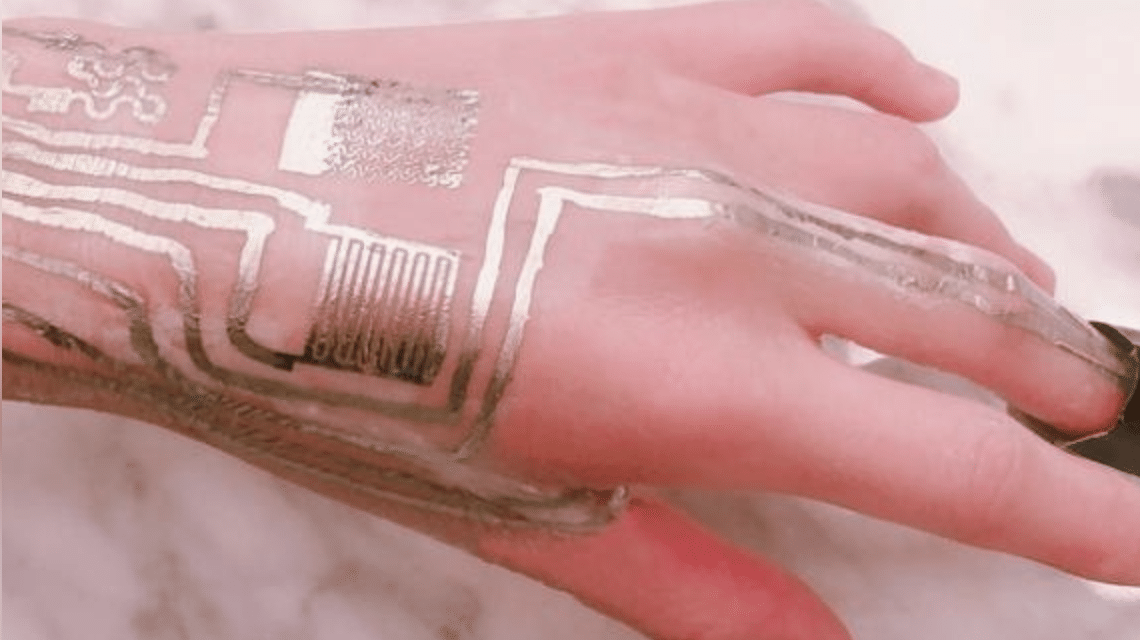(OPINION) ETH – In a new report this morning that is once again looking to pave the way for what we read about in the Book of Revelation Chapter thirteen with a future buying and selling system with the use of your right hand or forehead, Engineers have recently developed a way to print biometric sensors right onto the skin, like a non-permanent tattoo, without the use of heat.
According to the researchers, this will not only be more comfortable and less intrusive than today’s wearable devices, the technology — described Monday in the journal ACS Applied Materials and Interfaces — can also collect more precise biometric measurements. “In this article, we report a simple yet universally applicable fabrication technique with the use of a novel sintering aid layer to enable direct printing for on-body sensors,” first author Ling Zhang, a researcher in the Harbin Institute of Technology in China, stated in a recent news release.
Previously, the sintering process, which is the bonding of metallic components to the sensor, required temperatures of 572 degrees Fahrenheit, making the fabrication not suitable for human skin. “The skin surface cannot withstand such a high temperature, obviously,” Cheng said. “To get around this limitation, we proposed a sintering aid layer — something that would not hurt the skin and could help the material sinter together at a lower temperature.”
The report states that these researchers were first able to lower the sintering temperature to 212 degrees Fahrenheit by adding a new nanoparticle to the silver components which ended up creating what scientists called a sintering aid layer. “That can be used to print sensors on clothing and paper, which is useful, but it’s still higher than we can stand at skin temperature,” Cheng said.
“We changed the formula of the aid layer, changed the printing material, and found that we could sinter at room temperature.” The new aid layer that was created is out of polyvinyl alcohol paste and calcium carbonate which allowed scientists to fuse the ultra-thin layer of metal patterns to the sensor using a hairdryer set on cool. The device is now flexible and boasts all the necessary electromechanical characteristics. In recent tests, the scientists used their new wearable sensor to measure temperature, humidity, blood oxygen levels, and heart rhythms.
















